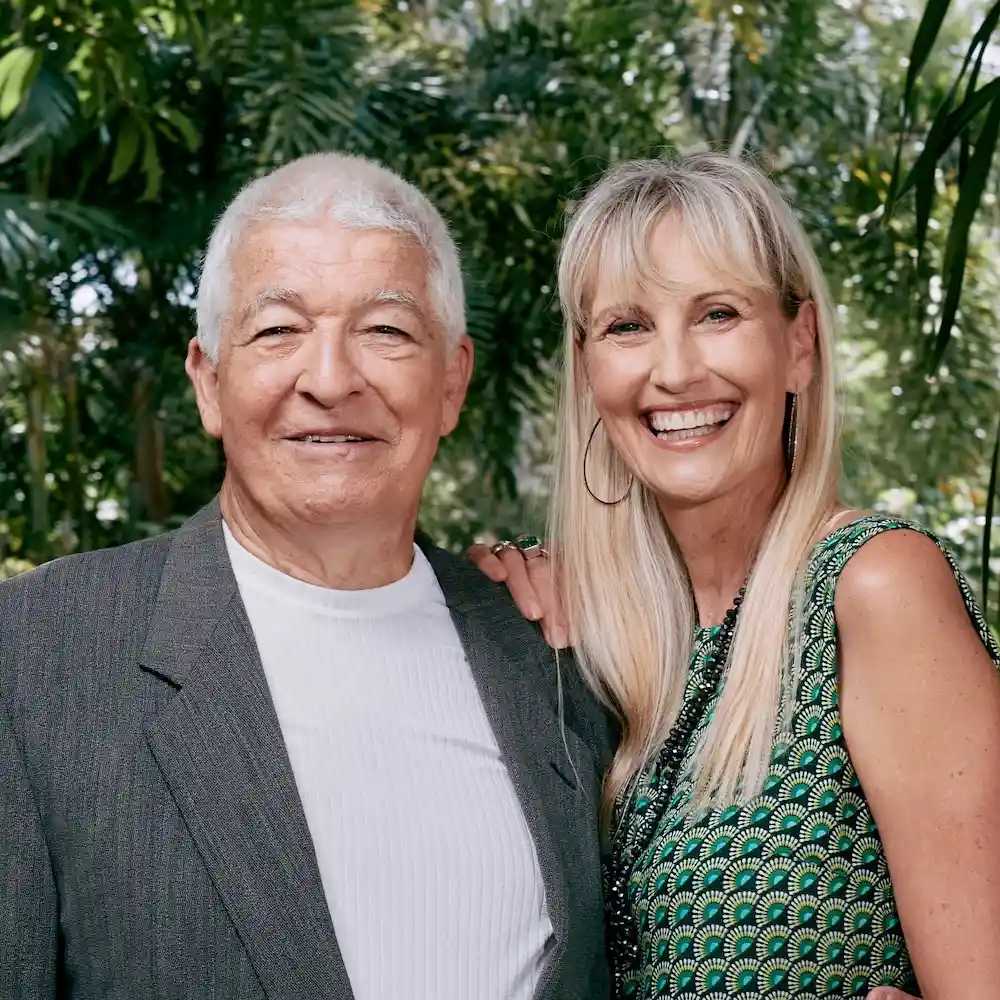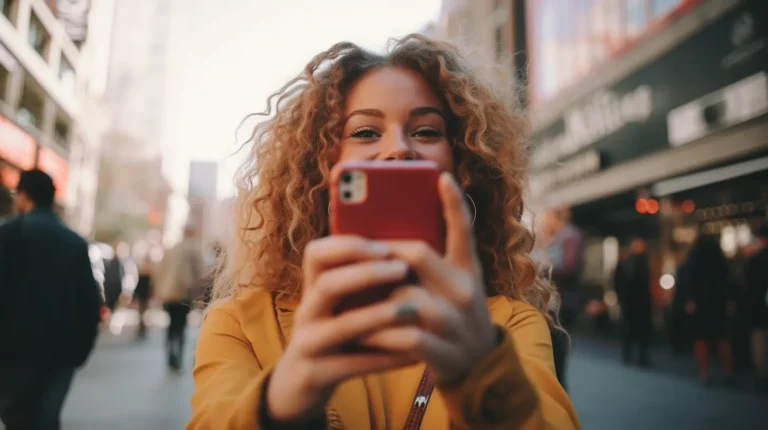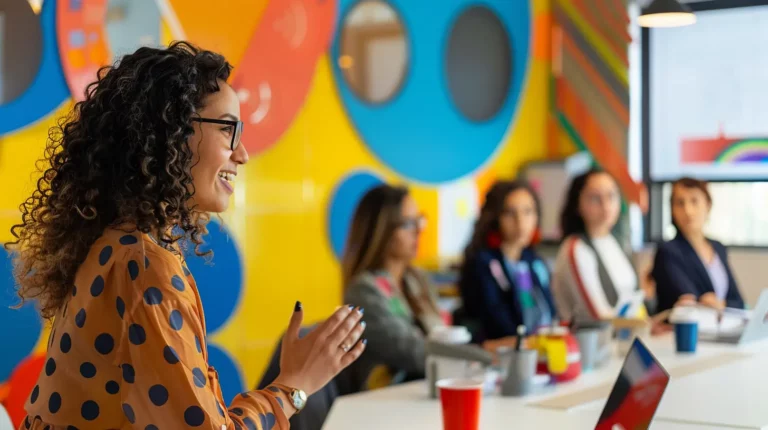“Body language” is not just a country song by Blake Shelton. It’s also one of the most, if not the most, powerful methods of expression. And the unique part of it all? It’s done without even uttering a single word.
This form of nonverbal communication is something all humans do (unless you’re a cyborg). However, it’s not necessarily something we’re good at.
That’s where body language experts, Allan and Barbara Pease and Linda Clemons®, can help. Allan and Barbara, are co-authors of the best-selling book, The Definitive Book of Body Language, and co-trainers of Mindvalley’s Mastering Body Language: Truth, Lies, Love & Power program. And Linda is CEO of Sisterpreneur, Inc. and trainer of Mindvalley’s Body Language for Dating & Attraction.
While Blake Shelton might be singing about sex, he’s got one thing right about body language: the body can talk, alright, without saying a word.
What is body language?
There are many ways to express messages—the most underestimated being body language. It’s a form of nonverbal communication based on how one looks, appear, dress, and behave. And more often than not, it’s done unconsciously.
It’s widely accepted that only 7% of effective communication is verbal; the rest is nonverbal (tone of voice at 38% and body language at 55%). That’s why body language is important.
“It shows how you’re feeling—you’re happy, sad, angry, holding back, telling the truth, lying, likely to say ‘yes’…,” explains Allan Pease.
Flashing the eyebrows, a light touch on the leg, crossing the arms, slouching in the chair, and the eye roll are all ways we subtly communicate.
Body language definition in science
While the body language definition in layman is the same as in science, there’s one word used in scientific circles to highlight: kinesics. Its root comes from the Greek word kinesis, meaning “motion.”
It refers to the study of hand, arm, body, and face movements as a form of social interaction. And like its verbal counterpart, there are different types of nonverbal communication:
- Gestures. There are three main types: adaptors (touching behaviors and movements often indicating how a person feels internally, like arousal or anxiety), emblems (signs that have a specific agreed-on meaning, like the middle finger or thumbs up), and illustrators (cues that don’t have a particular agreed-on meaning and are often used subconsciously, like using hand gestures to show the size or shape of something).
- Head movements and posture. These are used to acknowledge and show interest or attentiveness. For example, when we pass by someone we know, we may acknowledge them by giving a head nod. And when it comes to posture, it could be when we lean in toward someone we’re interested in.
- Eye contact. This part of the body helps signal when we’re ready to speak or finish up, allows us to interpret other people’s body signals, expresses that we’re interested (or not), and establishes connections.
- Facial expressions. The face is the most expressive part of the body. And when it comes to communicating, there are five universal expressions: happiness, sadness, fear, anger, and disgust.
While kinesics often discuss the types of nonverbal communication separately, it’s important to remember that they all work together to support, modify, or contradict the verbal message conveyed.
Open vs. closed body language
Verbally, there are words to express negative and positive emotions. It’s the same concept with nonverbals, except it’s called open body language and closed body language.
Here are the differences between the two:
| Open body language | Closed body language |
| You’re receptive to the other person and align your body’s movements to indicate so. There’s the use of positive body language, like open palms and arms, feet facing the person, and head tilting. | You close off your body to signal that you’re uninterested in a connection. The body gestures and movements can include crossed arms, slouching, and looking with your head down. |
How you “speak” with your body sends different messages. So it’s vital to be conscious that what comes out of your mouth is congruent to the movements you make with your body.
Why is body language so important?
There’s that adage, “Actions speak louder than words.” And the body speaks volumes, helping to reiterate messages or reinforce statements.
Body language is a powerful tool you can use to influence others and to succeed in business and personal relationships.
— Barbara Pease, co-trainer of Mindvalley’s Mastering Body Language: Truth, Lies, Love & Power program
Understanding the basic vocabulary of the unspoken language has a great many benefits. Here are five to highlight:
- Using positive body language can help you appear to be more friendly and likable,
- Decreases the stress hormone, cortisol,
- Improves your emotional intelligence,
- Boost your moods, and
- Helps improve confidence and charisma.
Empaths are more likely to pick up emotions through nonverbal communication. Because they’re highly sensitive to other people’s energies, they can read the other person’s body language and gauge what that person is feeling. In turn, they’re able to reciprocate their cues in kind.
According to Allan, also known as “Mr. Body Language,” this way of communication has such a significant impact that it can influence someone. He explains that when people feel comfortable with you, they can identify with you, that you understand them, and like you, there’s a higher likelihood they’ll want to build a connection with you.
It’s also important to note that the reverse is also true—if someone isn’t able to identify with you, it causes a tilt, and they’re more likely to turn you down.

Body language examples
The thing is, many of us are unaware that our bodies are talking because we weren’t taught how to be conscious about it.
So here are three common life scenarios and body language examples used within them. And the next time you find yourself in a similar situation, you’ll be able to recognize them as cues to proceed or to turn the other way.
Examples in dating
Navigating the dating scene can be a doozy. However, it’s about body language attraction, and here’s how it can look:
- Positive body language: When you’re sharing a personal story with your date, they tilt their head and lean towards you, maintaining eye contact.
- Negative body language: When you’re sharing a personal story with your date, they lean back and slouch in the chair with a deadpan look on their face.
Examples in the workplace
The office is filled with opportunities to pick up on nonverbal cues, whether it’s a discussion between coworkers or a presentation. Here’s how it can look:
- Positive body language: When you meet a new client, they mirror your handshake.
- Negative body language: When you meet a new client, their handshake is limp or too strong.
Examples in public space
The next time you’re out at a bar, a concert, or any other public place, check out the nonverbals on display. Here’s how it can look:
- Positive body language: When you’re at the store, people form a line at the checkout counter and go through the process calmly and respectfully.
- Negative body language: When you’re at the store, people are trying to checkout in an unorderly manner that can cause chaos and confusion (like the madness that happens during Black Friday).
How to read body language accurately
One crucial mistake that’s often made is to interpret a cue in isolation without considering other gestures, postures, circumstances, or context. It’s like hearing a single word and trying to understand the overall message.
Body language has words, sentences, phrases, and punctuation. And that’s what you need to read to get an accurate reading.
— Allan Pease, co-trainer of Mindvalley’s Mastering Body Language: Truth, Lies, Love & Power program
In their program on Mindvalley, Allan and Barbara highlight three rules that can help accurately assess others’ signals.
1. Read nonverbal cues in clusters of three
One movement can have several different meanings. For example, if someone is scratching their head, it could mean they’re lying. Or it could simply be that they have dandruff.
So when you’re interpreting someone’s movements, do it in clusters of three. (In body language, a “cluster” is the equivalent of a “sentence.”) It helps avoid assumptions and misunderstandings.
2. Read gestures in context
Understanding context is important in verbal communication; it’s no different in nonverbal. Context is important because it gives meaning and clarity to the intended message.
Take the “V” sign (holding up the index and middle fingers), for instance. Here are two different examples of how it could be interpreted.
| Example 1 | Context: You’re at a bar and someone holds up the “V” sign. | Interpretation: For some parts of the world, this means two. |
| Example 2 | Context: You’re hanging out with your friends and someone is taking a photo. | Interpretation: It’s the peace sign. |
Fun fact: the “V” sign was originally used to signal victory by allied nations during World War II.
So remember: read gestures in context. Because without it, the cues have no significant meaning.
3. Look for congruence
In body language, congruence means what you hear (the verbal) matches what you see (the body language). And both must be in synergy because, without it, there’s a likelihood of mistrust.
“Research reveals that the verbal and nonverbal incongruent, that is, what you see doesn’t match with what you hear, most people, especially female-brain people, will rely on the nonverbal message and they’ll disregard the verbal,” explains Allan.
If there’s no congruence, it wouldn’t matter if a person is Honest Abe or selling the Fountain of Youth. People will just not give the time of day.
Bonus: Be aware of cultural differences
The wonderful thing about cultures is that each one has customs and traditions that represent who they are as a group of people. And it’s no different when it comes to body language.
Although there are many universal cues that we, as humans, use (like yawning), there are some that a unique to specific cultures. Here are some examples:
- A head nod is mainly recognized as “yes.” However, in Bulgaria, it means “no.”
- A reverse “V” sign (holding up the index and middle fingers with the palm facing towards you) is slang for “peace.” In the United Kingdom, Ireland, New Zealand, and Australia, however, it means “up yours.”
- Using the index finger to point is normal in many countries, but it’s considered rude in others.
While you may not have to encounter situations like these on a day-to-day basis, Allan suggests understanding and learning the cultural differences in body language when you do visit other countries.
Build More Meaningful Connections: 7 Secret Cues From Mindvalley Experts
Reading body language is one thing, but knowing how to reciprocate is another. Even if you’re naturally charismatic or identify as socially awkward, mastering nonverbal cues can help you build more meaningful relationships.
Taking bite-sized wisdom from Allan and Barbara Pease as well as Linda Clemons®, here’s a deeper look at seven body language cues, why they’re so powerful, and how to use them to your advantage.
1. Tilting your head
Head tilts are one of the most common gestures out there, according to Allan — and with good reason. It shows you’re interested in the other person and also signals that you’re involved in the conversation.
This gesture exposes your neck, signaling a certain level of vulnerability when you do so. And this can foster trust, closeness, and empathy, which are essential interpersonal skills.
How to use it: When you want to focus on what another person is saying, drop your head off-center to one side. Not so much that your ear touches your shoulder, but ever-so-slightly that it’s noticeable and leaves a part of your neck exposed.
2. Showing your palms
“The use of palms is so critical to how well you get along with people and how they accept you or not,” Allan explains. He adds that there are three basic palm positions used around the world:
- Palm up: You’re open and welcoming.
- Palm down: You’re closed off and resisting the other person.
- Finger pointing: You’re being authoritative and, as Allan describes it, “treating them like you’re hitting them with a stick.”
So explore what your current dominant palm position is — everyone has got one — and practice communicating with your palm up.
How to use it: Let’s say you’re greeting a person with a handshake. Extend your hand with your palm turned slightly upwards (not all the way, lest you want them to give you a “low five”). The exposure of your palm is a cue that you’re trustworthy and welcoming.
3. Mastering mirroring
One of the best ways to increase your likeability and influence is through mirroring body language. Nonverbal mimicking can show the other person, “I’m the same as you,” according to Allan.
“We mirror other people’s body language as a way of bonding, getting accepted by them, and creating rapport,” he says. It’s a human trait that dates back to primitive times as a way for our ancestors to fit into tribes for safety and social reasons.
How to use it: Orient your body to face the person you’re talking to and mimic their gestures in the most natural way possible. Allan advises to “wait three seconds after each gesture that they make before you copy their gesture” — this will allow your mirroring to look organic rather than a mockery.
4. Smiling and laughing
“Put on a happy face,” they say. “Show your pearly whites,” they say. Well, they have a point.
Smiling produces a positive reaction in others, according to Barbara. She adds, “Smiling and laughter are in eight human behaviors that have powerful effects on both the person making the gesture and the person seeing it.”
As science shows, the powerful effects include lifting your mood, lowering your stress levels, and boosting your immune system, all of which can contribute to longevity.
How to use it: Smiling and laughter are contagious — it’s called a mirroring reaction. So you smile at someone, there’s a likely chance they’ll smile back. And with laughter, while we don’t laugh at someone, laughing with them helps open up the doorway to rapport.
Learn more about mastering body language from Allan Pease in this episode of The Mindvalley Podcast:
5. Dressing to attract
If you’ve ever read The Game by Neil Strauss, you may recognize this as the “peacock theory.” He explains it as “the idea that in order to attract the most desirable female” — because this book is geared towards men — “of the species, it’s necessary to stand out in a flashy and colorful way.”
The equivalent of a fanned peacock tail, dressing to attract can consist of a shiny shirt, a bright hat, and jewelry. In Linda’s case, wearing something that suggests that it can be “unwrapped.”
How to use it: One of the many dating tips Linda advises to do is to wear bright colors, especially on the clothing that’s on top. Black is great for the boardroom, but radiant hues like red and yellow are best for love attraction. Additionally, clothes that can be “unwrapped,” like a cardigan or jacket, can pique curiosity.
6. Speaking with your eyes
The eyes are the windows to the soul, as the saying goes. “It allows you to be able to look at another human being and decide (in a primitive way, if you will) if that person is going to be a friend or a foe,” explains Linda.
However, how long you hold your gaze can signal whether you really are a friend or a foe. So what’s the appropriate length of time for eye contact?
A 2016 study looked into this particular topic. It measured the pupil dilation of 500 volunteers to see how long they could hold their gaze before the feeling of uncomfortableness set in. They found that it was around three seconds.
How to use it: If you’re in a business setting, keep your eyes above the level of the person’s nose. And for seduction, steal glances below that.
7. Positioning your body
How you face the person and your proximity to them says a lot about your interest in them. However, if your body is turned away from them, it signals that you’re nervous, uneasy, or want to leave the scene.
“Here’s what’s important: face-to-face, heart-to-heart,” says Linda. “What a great way to communicate and connect with another human being.”
How to use it: Position your posture to face the person you’re speaking to. If you’re standing, point your leading foot towards them. If you’re sitting, lean in to show you’re focus is on them. And remember: honor and respect their personal space.
Find out more tips by listening to Linda Clemons® on The Mindvalley Podcast:
Let your body (language) do the talking
If you’re like Blake Shelton and only “catchin’ every third word,” then knowing how to read body language cues can be useful. And knowing how to use it can be an advantage — for your love life, professional life, social life, family life, and whatever else.
While reading about it is a great start, getting insights and tips from the Mindvalley experts can take you a step further. Here’s where you can start:
- Mastering Body Language: Truth, Lies, Love & Power with Allan and Barbara Pease (available in 2023). Not only will you learn how to decode other people’s body language in everyday face-to-face encounters, but you’ll learn how to master your own as well.
- Body Language for Dating & Attraction with Linda Clemons®. A program geared specifically for women, you’ll get in tune with your sensuality and charisma by understanding how to use the power of body language.
With Allan and Barbara as well as Linda at the helm of the body language programs, you’ll find a vast amount of knowledge on this particular topic. And by signing up for an account, you can sample some lessons from these programs for free.
Welcome in.










